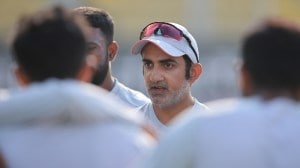The Mahi way
Dhonis mystifying decision to call Ian Bell back
In the second Test at Trent Bridge against England,Indias seam attack and Rahul Dravid together gave them a chance that was blunted by a workmanlike and determined Ian Bell. Yet,after Bell was given run out before the tea interval he had left his ground but the ball was still in play Dhoni withdrew his appeal,calling him back to the crease. That was,simply,the easy way out. Nothing in the laws required it; and only a desire to appear the nice guy,at the risk of diluting the keen competitive edge of the moment,would appear to underlie the decision.
Mahendra Singh Dhonis team,or so it appeared,might have figured out the benefits of a bit of steel in the backbone. It is more than about what it takes to be number one; it is about treating each moment,each decision,with the respect that competitiveness deserves. Yet the lesson that India began learning 10 years ago,when Sourav Ganguly broke decisively from the nice-guy archetype that had dogged the national team for decades and stared down opponents,seems to have been worryingly forgotten of late. Instead,another pattern is discernible: a casualness,a desire to cement popularity rather than competitiveness,and even a natural inclination to stand apart from the rest.
It is part of a pattern now. Think back to the third Test against the West Indies in Dominica,just three weeks ago. Set a target of 180 runs,Dhonis India refused the option of an additional 15 overs on the fifth day,when they were 86 runs short and had seven wickets in hand. It was not and it is not so now about pursuing victory at all costs. Thats not necessarily cricket. What is cricket is the willingness to give the match something extra to keep it competitive. For there is no way of remaining truer to sport than to go the extra distance at every given moment to keep the contest as keen as it can be. This is the second time in as many series that Dhoni has let himself,and the sport,down by opting for the easy road.


- 01
- 02
- 03
- 04
- 05





























